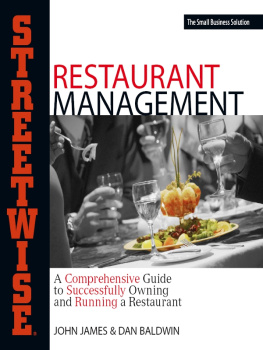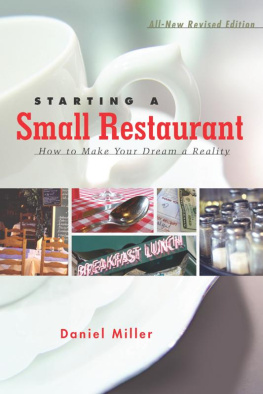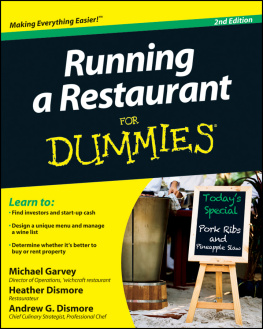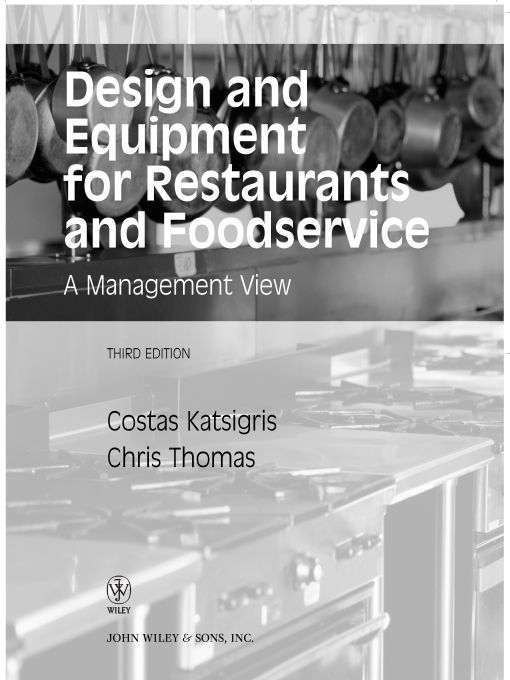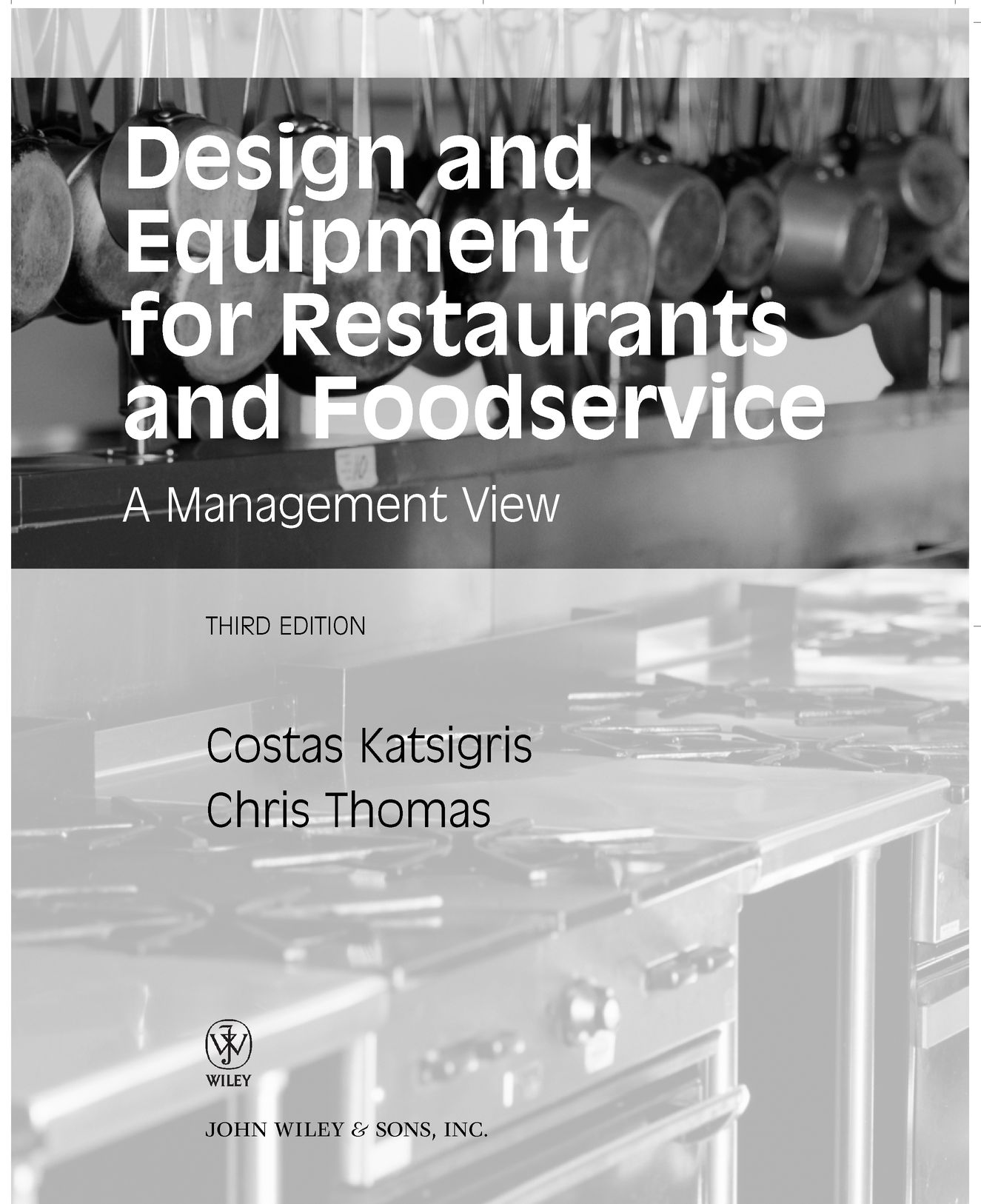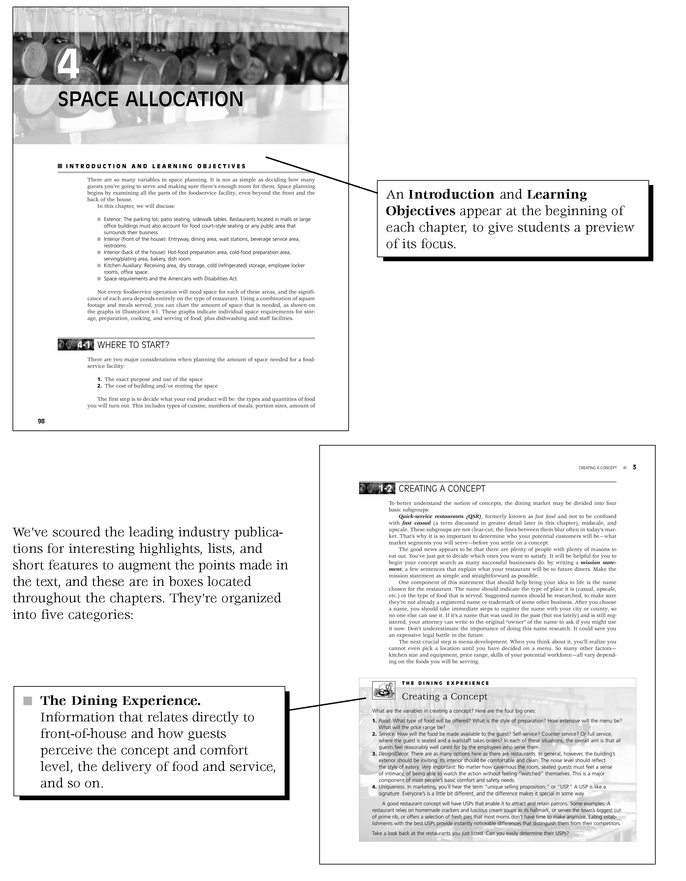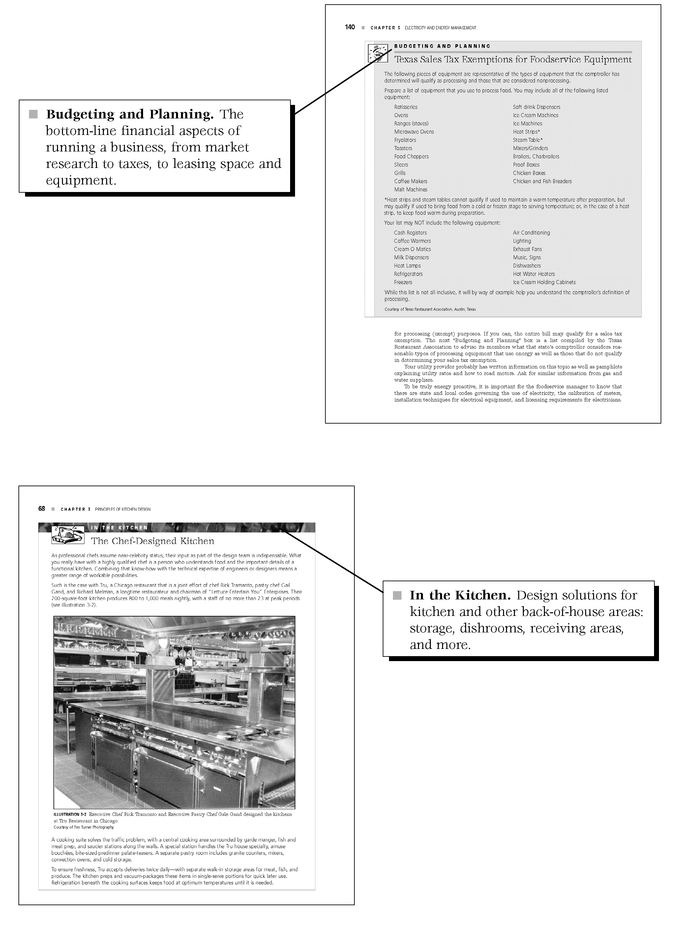Table of Contents
Preface
Over the past 10 years, the restaurant industry has reinvented itself in so many ways, to meet the changing demands of customers as well as the new expectations that customers and government entities have for many types of businessesfrom environmental sensitivity to conservation of natural resources, to use of local products and vendors to minimize ones carbon footprint. Weve tried to reflect the changes in this, the third edition of the book. It is still intended primarily for students in culinary and/or hospitality management programs.
Increasingly, however, it is being used by restaurateurs and even equipment dealers, as a go-to guide for the basics about all different types of foodservice equipment, how to select it, install it, and take good care of it.
ORGANIZATION
The chapters are organized roughly according to the steps a person would take to open a restaurant or foodservice business. Chapter 1 discusses everything youd need to select a site for the business and covers how to determine whether to lease or purchase the space.
Chapters 2, 3, and 4 delve into how to design the space. This means analyzing how much room youll need for each task and the area(s) in which the tasks are performed and how those areas will be expected to work together. Chapter 2 focuses on front-of-house details,
Chapter 3 on the commercial kitchen, and Chapter 4 contains a little bit of both. In Chapter 4, weve also updated information about space planning for customers and employees who have physical disabilities.
Chapters 5 and 6 take the reader into the world of utility use and utility bills, no small part of a commercial foodservice business. These chapters have been extensively updated with an eye to conservation practices, energy efficiency, the future of alternative power sources, green business practices, and so onalthough the basics are also still in place, from how to read electric and gas meters and decipher the bills, to guidelines for most efficient use of steam equipment.
Chapter 7 continues the discussion of how to create a particular atmosphere for a restaurant with choices of lighting, sound control, and temperature control. In Chapter 8, were at the back of the house again, for an expanded look at keeping employees safe and comfortable on the job. Food safety and food handling practices, as well as a new focus on waste management, are found in this chapter.
In Chapter 9, we begin the Equipment portion of Design and Equipment for Restaurants and Foodservice with a thorough discussion of how to purchase commercial appliances to outfit a foodservice kitchen. From how to write equipment specifications, to the option of leasing rather than buying, to warranty and service programs and methods of installation, its all here. The seven chapters that follow it (10 through 16) divide major appliances into categories by type and delve into more detailed information about how to select and maintain each type. Both gas and electric appliances are discussed. Where appropriate, specialty versions of the equipment also are introduced and described: soft-serve ice cream machines, smoker-cookers, pasta cookers, panini grills, waste pulpers, and more.
Chapter 17 rounds up the smaller, but nonetheless vital, types of equipment necessary for ease and speed of food preparation. The commercial versions of these handy countertop appliancesfood processors, toasters, slicers, mixers, warmers, and coffee makersare much sturdier and more powerful than those made for home use, and this chapter explains their selection, safe use, and maintenance. Chapter 18 continues the nuts-and-bolts focus with a closer look at the most common hand tools found in every commercial kitchen, along with knives, equipment for measuring volume and temperature, cookware, and serving and holding containers.
The final two chapters of the book cover two topics that involve both front and back of the house, because they are both decorative and labor-intensive. After reading Chapter 19, youll be better able to select plateware, glassware, and flatware after learning about how theyre made, including common shortcuts in the manufacturing processes that affect both price and quality. Youll also know how to clean and store these items properly. Chapter 20 takes the same premise and applies it to linens and table coverings, with information about how fabrics are made and how to use and care for them, including advice for using a linen rental company and/or designing an on-premise laundry room.
NEW TO THIS EDITION
The foodservice industry never ceases to amaze us, with entrepreneurs that have provided a wealth of best new ideas to share in this edition. You will notice:
In Chapters 5 and 6, more extensive information about many aspects of green building, from energy efficiency and water conservation, to new forms of recycling and waste reduction, alternative energy sources, smarter use of smaller spaces, and LEED certification.
Discussion about new uses for technology in foodservice, including the NAFEM Data Protocol and a restaurateurs ability to do prepurchase research and calculate an appliances total cost of ownership online in Chapter 9.
More information about the terms of leases for rented restaurant space in Chapter 1.
Two design examples, a restaurant (between Chapters 2 and 3) and a school cafeteria (between Chapters 4 and 5), complete with layouts and equipment keys. These are used with the gracious permission of Joseph Carbonara, editor-in-chief of Foodservice Equipment & Supplies magazine, where more such examples, by contributing editor Donna Boss, are published monthly.
A discussion of mobile foodservice options and industry trends for pleasing customers who have less time to spend dining out but still want (and will pay for) top-quality food and service in Chapter 2.
Trends in the business overall, including multichain operators, branding concepts (Chapter 1), designing for smaller spaces, and the growing use of cook-chill for quality control rather than volume cooking (Chapter 15).
More safety and sanitation information, including top-of-the-line handwashing stations, slip-and-fall prevention, fire safety, green cleaning products, antimicrobials, and electrolyzed water, detailed in Chapter 8.
Updated information about the Americans with Disabilities Act, including restroom and parking requirements in Chapters 1 and 4.
Equipment-specific trends, including the use of proprietary (no-substitution) specifications, the growth of warranty servicing companies, leasing versus purchasing equipment, and the advent of equipment breakdown insurance, all in Chapter 9.
Discussion of healthier forms of cooking oil being developed for fryers in Chapter 12, and updated information about acceptable refrigerants for foodservice in Chapter 10.
New tabletop trends, including streamlining glassware purchases (Chapter 19), interesting alternatives to table linens, and how to rent rather than purchase linens (Chapter 20).
FEATURES


